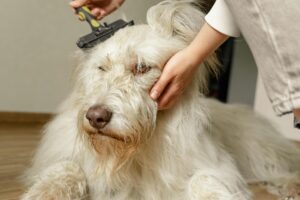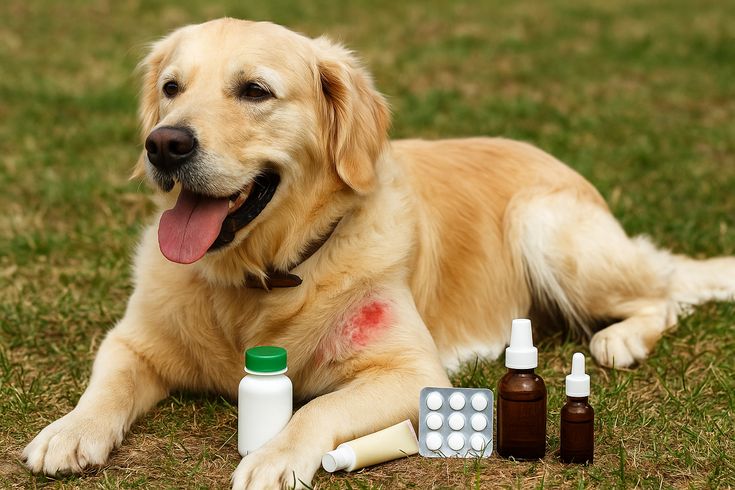A Guide to Pet Care: Essential Secrets for Loving Owners
Welcoming a pet into your life is a life-changing experience, one that brings joy, companionship, and unconditional love. Whether you are a first-time pet parent or someone with years of experience, understanding the fundamentals of pet care is essential. Pets are more than animals living under your roof; they become family members who depend on you for love, safety, nourishment, and guidance. By learning and practicing the right methods, you can ensure that your furry (or feathered) friend lives a healthy, happy, and fulfilling life.
This article is designed to serve as a guide to pet care, offering everything you need to know as an owner. From nutrition and grooming to health, training, safety, and emotional well-being, you’ll find essential advice here to help you and your pet thrive together.
Understanding Your Pet’s Basic Needs
Every pet, regardless of breed or species, has a set of fundamental needs that must be met for them to live comfortably. Fulfilling your pet’s basic needs creates the groundwork for a healthy bond built on trust and care.
Food and Nutrition
Ensuring your pet receives a nutritious, balanced diet is essential for supporting their overall health and energy. Pets need appropriate levels of proteins, fats, vitamins, and minerals, which vary depending on their age, breed, and health status. Always consult a veterinarian when deciding between commercial pet food and home-cooked meals. Fresh water should be available at all times, and treats should be used sparingly to avoid obesity.

Shelter and Comfort
Your pet deserves a safe, cozy space to rest and feel secure. This could be a bed in a quiet corner or a designated area where they can retreat without disturbances. A comfortable environment also includes protection from extreme weather and regular cleaning to ensure hygiene.

Exercise and Playtime
Just like humans, pets need exercise to stay healthy. Daily walks, engaging play, and interactive toys keep pets active while preventing boredom, weight gain, and destructive habits. Making physical activity part of your pet’s routine is not optional—it’s necessary for their physical and mental health.
👉 For first-time owners, a guide to pet care always begins with fulfilling these three basic needs—nutrition, comfort, and activity.
Grooming and Hygiene
Good grooming habits keep your pet clean, comfortable, and free from health issues. Grooming is also an excellent way to bond with your pet, as it involves gentle care and regular attention.
Bathing and Cleaning
Baths help control dirt, Odors, and parasites, but they should not be too frequent, as over-bathing can strip natural oils from the skin. Brushing your pet regularly helps control shedding while keeping their coat smooth, shiny, and in great condition. Nail trimming is another essential grooming task that prevents pain and injuries.

Oral Care
Dental hygiene is often overlooked, but poor oral health can lead to infections that affect vital organs. Brushing with pet-safe toothpaste, providing dental chews, or scheduling professional cleanings will keep your pet’s mouth healthy.
Parasite Control
Parasites like fleas, ticks, and worms not only cause discomfort but can also lead to serious health problems. Preventive treatments, vet check-ups, and maintaining a clean environment help keep parasites under control.
👉 Cleanliness and grooming practices are highlighted in a guide to pet hygiene as vital steps for maintaining a pet’s overall health.
A Guide to Pet Training and Behavior
A properly trained pet enjoys a happier, safer life and becomes a wonderful companion at home. Training helps pets understand expectations, strengthens communication, and builds trust between owner and pet.
Basic Commands
Teaching commands like sit, stay, and come ensures safety and helps in day-to-day management. Training should always be consistent, patient, and based on positive reinforcement such as treats or praise.

Socialization
Introducing pets to different people, animals, and surroundings builds confidence and lowers anxiety. Proper socialization minimizes aggression and fear, ensuring pets remain well-adjusted throughout their lives.
Handling Behavioral Issues
Pets may bark excessively, chew on furniture, or scratch when stressed or under stimulated. Identifying the root cause and offering appropriate outlets for energy or stress can resolve many behavioral challenges.
👉 Proper training strategies are always included in a guide to pet behavior because they ensure pets adapt well to family life.
Health and Veterinary Care
Pets rely on their owners to keep them safe from illness and to detect when something is wrong. Veterinary care should never be neglected.
Routine Checkups
Regular annual checkups allow your vet to track your pet’s health and detect problems before they become serious. These visits typically include physical exams, vaccinations, and diagnostic tests.
Vaccinations and Medications
Vaccines protect pets from deadly diseases like rabies, parvovirus, and distemper. Sticking to your vet’s recommended vaccination plan is one of the most effective ways to protect your pet. Preventive medications for heartworms, fleas, and ticks should also be part of your routine care.

Recognizing Illness Early
Because pets can’t tell us when they are in pain, it’s crucial to watch for changes in appetite, energy, or bathroom habits. Detecting problems early can make treatment easier and more effective.
👉 Preventive health steps are a core part of a guide to pet healthcare, helping owners ensure long, healthy lives for their companions.
Safety and Protection
Your home and surroundings should be a safe haven for your pet. Ensuring safety indoors, outdoors, and while traveling reduces risks and gives peace of mind.
Indoor Safety
Pets can be curious explorers, so toxic plants, cleaning chemicals, or small objects they could swallow should be kept out of reach. Making your home safe for pets is just as essential as childproofing for kids.

Outdoor Safety
Supervised walks, secure fencing, and proper identification tags or microchips protect pets from getting lost or hurt. Outdoor time should be fun, not risky.
Travel Safety
Traveling with pets requires extra preparation. Using a secure carrier, packing essentials, and ensuring frequent breaks during long trips make journeys safe and comfortable.
👉 From homes to highways, a guide to pet safety emphasizes that prevention is always better than cure.
Emotional Bonding and Mental Well-Being
Pets thrive not just on physical care but also emotional support. The strength of your bond directly influences their happiness.
Love and Attention
Daily affection—whether through cuddles, play, or simply being present—strengthens your connection with your pet.

Mental Stimulation
Interactive toys, puzzles, and training exercises keep pets engaged and mentally sharp, reducing destructive behaviors.
Handling Separation Anxiety
Pets often struggle when left alone for long periods. Gradual training, leaving familiar scents, and using calming tools can ease their stress.
👉 Strengthening emotional ties is central to a guide to pet bonding because love and attention are as important as food and shelter.
Special Care for Different Pets
Different animals have unique needs. Dogs, cats, birds, and small pets all require specialized approaches.
Dogs
Dogs thrive on social interaction and require regular exercise, proper training, and loving companionship. Without proper engagement, they can become lonely or destructive.
Cats
Cats may be independent, but they still crave attention, play, and veterinary care. Providing scratching posts and a secure indoor space is vital for your cat’s well-being.
Birds, Rabbits, and Others
Smaller pets like birds and rabbits need species-specific diets, clean enclosures, and opportunities for socialization.
👉 Tailoring your approach to different species is recommended in a guide to pet care because no two pets are alike.
Financial Planning for Pet Care
Caring for a pet also comes with financial responsibilities. Preparing for expenses helps avoid stress.
Budgeting for Expenses
The cost of food, veterinary care, grooming, and essential supplies can quickly become significant. Creating a monthly budget ensures you’re prepared for regular costs.
Pet Insurance
Insurance can significantly reduce financial stress in emergencies. Policies vary, so choose one that covers your pet’s most likely risks.
👉 Responsible budgeting is often highlighted in a guide to pet expenses to ensure no pet is neglected due to financial strain.
Responsible Pet Ownership
With pet ownership comes responsibility—not just to your animal but also to your community.
A Guide to Pet Adoption vs. Buying
Adopting from shelters saves lives and reduces overpopulation. If buying, ensure breeders are ethical and prioritize animal welfare.
Spaying and Neutering
Preventing overpopulation through spaying or neutering is a responsible step that also brings health benefits.
👉 Responsible decisions like adoption and spaying are emphasized in a guide to pet ownership as part of ethical pet care.
Conclusion: A Lifelong Journey of Love
Owning a pet is not a short-term commitment but a lifelong journey filled with joy, patience, and unconditional love. By making informed choices and taking the right steps, you can build a home where your pet flourishes—physically, emotionally, and socially.
This article has served as a guide to pet care, giving you the tools to provide balanced nutrition, safe living spaces, proper training, preventive healthcare, and above all—love. In return, pets offer loyalty and affection that enrich our lives in ways words cannot fully capture.
For us, pets are just one part of life, but for them, we become their entire world.







